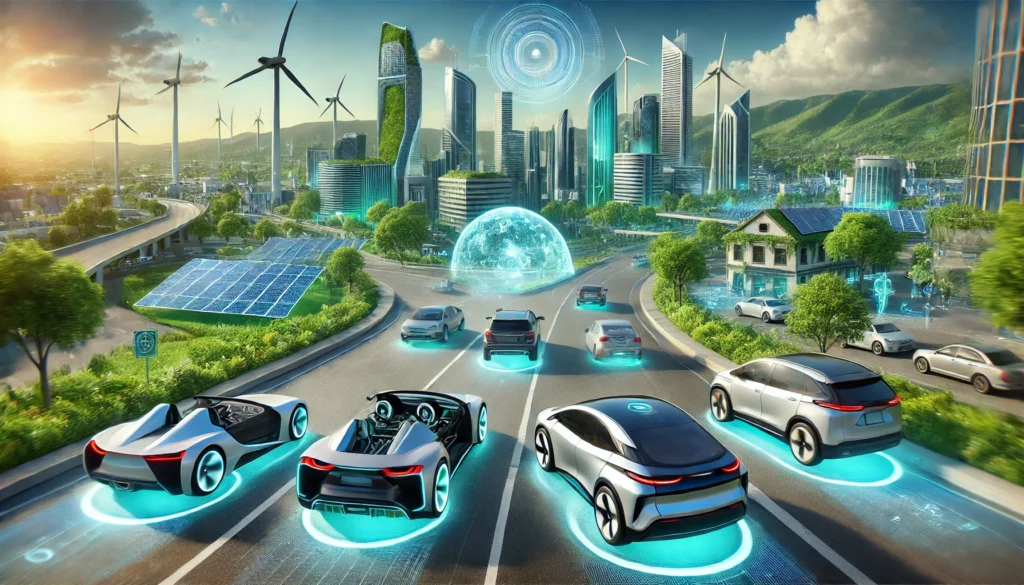Introduction to Green Technology in the Automotive Industry
The automotive industry has, therefore, emerged as a significant revolution, especially in green technology. Concerns associated with environmental pollution and global changes have led to major global car manufacturing and styling changes. EVs, hybrid cars, and efficient resources are part of this change with non-gasoline or diesel engine automobile models.
This shift is not only cutting out carbon emissions, but it is also transforming transportation systems completely. Sustainability has become a focal area for new and improved manufacturing methodologies that reduce emissions through enhanced production methodologies, stored power from renewable energy forms, and new materials that replace the prior metal and plastic. Besides, governments and organizations are developing measures and subsidies to encourage the application of higher-quality energy and technology.
This article will focus on categorizing sustainable vehicles, their contribution to addressing environmental degeneration, and their economic effects. REEEP (Renewable Energy and Energy Efficiency Partnership) also reveals that a cleaner environment is created since air purity is improved and employment is made in green industries that spark a greener mobility industry.
Key Takeaways
- Green technology is reshaping the automobile industry by promoting eco-friendly cars.
- Batteries and electric cars and the progress in the technology of batteries are the trends for cleaner transportation.
- Sustainable vehicles help reduce harmful emissions and improve air quality in cities.
- Government support and rising consumer interest are boosting the market for eco-friendly cars.
- Challenges like infrastructure and public misconceptions still need to be addressed for a smoother transition to clean energy.
Adoption of Green Tech – Automobile Industry
Historical Overview of Eco-Friendly Cars
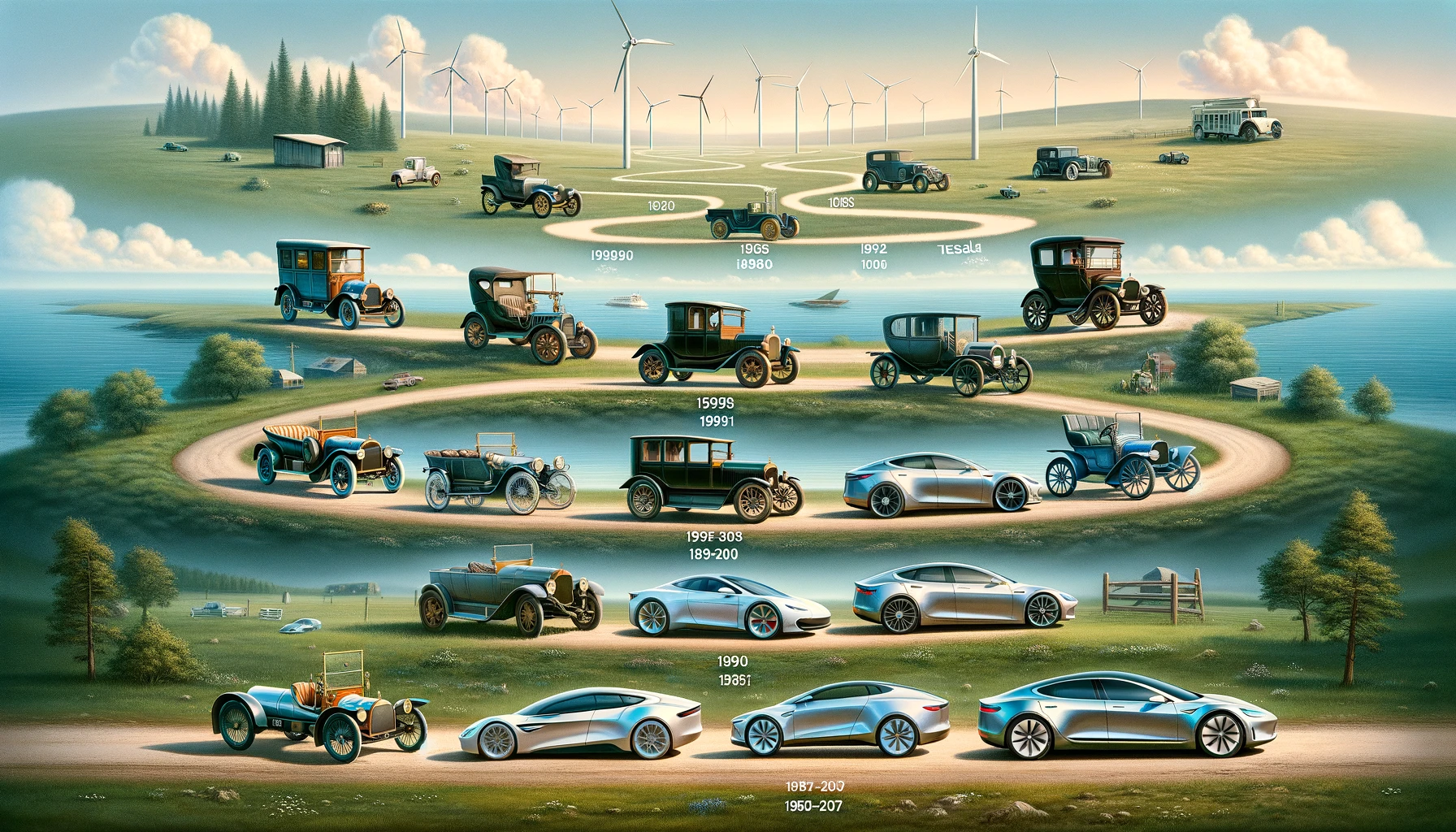
The concept of environmentally friendly cars emerged in the last quarter of the Twentieth Century as a revolution in automobile manufacturing. Hybrid cars like the Toyota Prius also marked a change; it included a gasoline engine and electrical motor in an auto to produce low emissions and better fuel economy. Modern innovations, however, have shifted the focus towards completely green cars, better known as Electric Vehicles (EVs), that dump tailpipe emissions in their entirety.
Indeed, the shift to EVs has already started, though it is still in its middle phase, requiring much more effort shortly. While the transportation sector has made significant progress, most of the important barriers, including establishing a vast network of charging points, enhancing battery technology, and cutting manufacturing costs, are yet to be uniquely solved.
Current Trends in Sustainable Vehicles
The automobile industry is in the process of transformation to sustainable structural changes; much progress is being oriented toward future mobility. Here are the key trends driving this change:
Building up the Production of Electric Vehicles
Automakers continue to increase the output of electric cars to fill the existing market demand. Most automakers have agreed to remove all gasoline autos from their fleets and switch to purely electric models within the next decade.
Additional Availability of Charging Points
Governments and private companies have stepped up investments in the construction of charging infrastructure, which makes the shift to electric vehicles easier since charging stations are available nearly everywhere.
Consumer Interest in Sustainable Products
Since the issue of climate change consciousness has been an unprecedented growth in the market, there has been a push towards hybrids, electrics, and anything environmentally friendly.
These trends speak of a rather massive increased focus on making transportation greener in general, which consequently means a brighter future for the transportation industry and the world.
Future Prospects for Clean Energy Automobiles
Hydrogen Fuel Cell Technology
The future of clean energy automobiles appears prosperous. Experts predict:
- A characteristic example is the improved usage of hydrogen fuel cells.
- Advanced battery development would allow cars to travel long distances on a single charge.
- The government should offer more incentives to buy environmentally friendly products.
It is not just a trend that companies are promoting green technology in cars; it has become inevitable to adopt green technology. In conclusion, green technology integration in the automobile industry is a progressive process with its antecedents, present status, and a bright plan to make the environment green.
Innovations in EV Batteries
Electric Vehicles and Battery Advancements
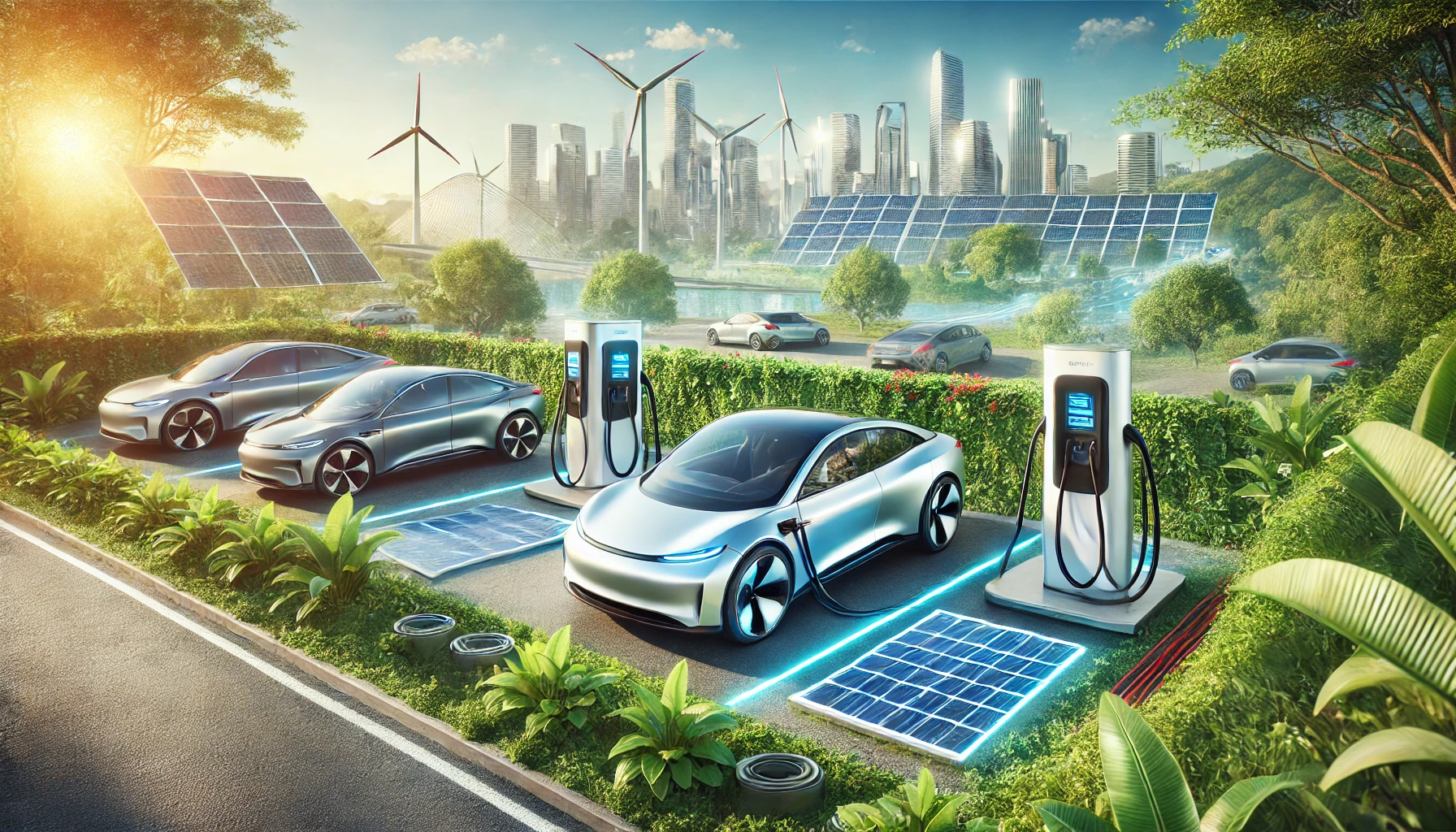
Electric vehicles are changing the face of transport systems all over the world. EVs do not emit harmful gas, as is the norm with gasoline-powered cars. Thus, EVs are environmentally friendly. The extended use of different technology aspects has also enhanced battery competence, making electric vehicles more feasible. Here are some key highlights of these battery improvements:
- More extended Range: Today’s batteries can be far more effective for such aspects as when they can retain their charge.
- Faster Charging: Among them are the charging times, which have been shortened to provide more convenience to the driver.
- Lower Costs: Anything related to batteries has been cheaper, and now, the cost of electric cars has come down, too.
Hydrogen Fuel Cell Technology
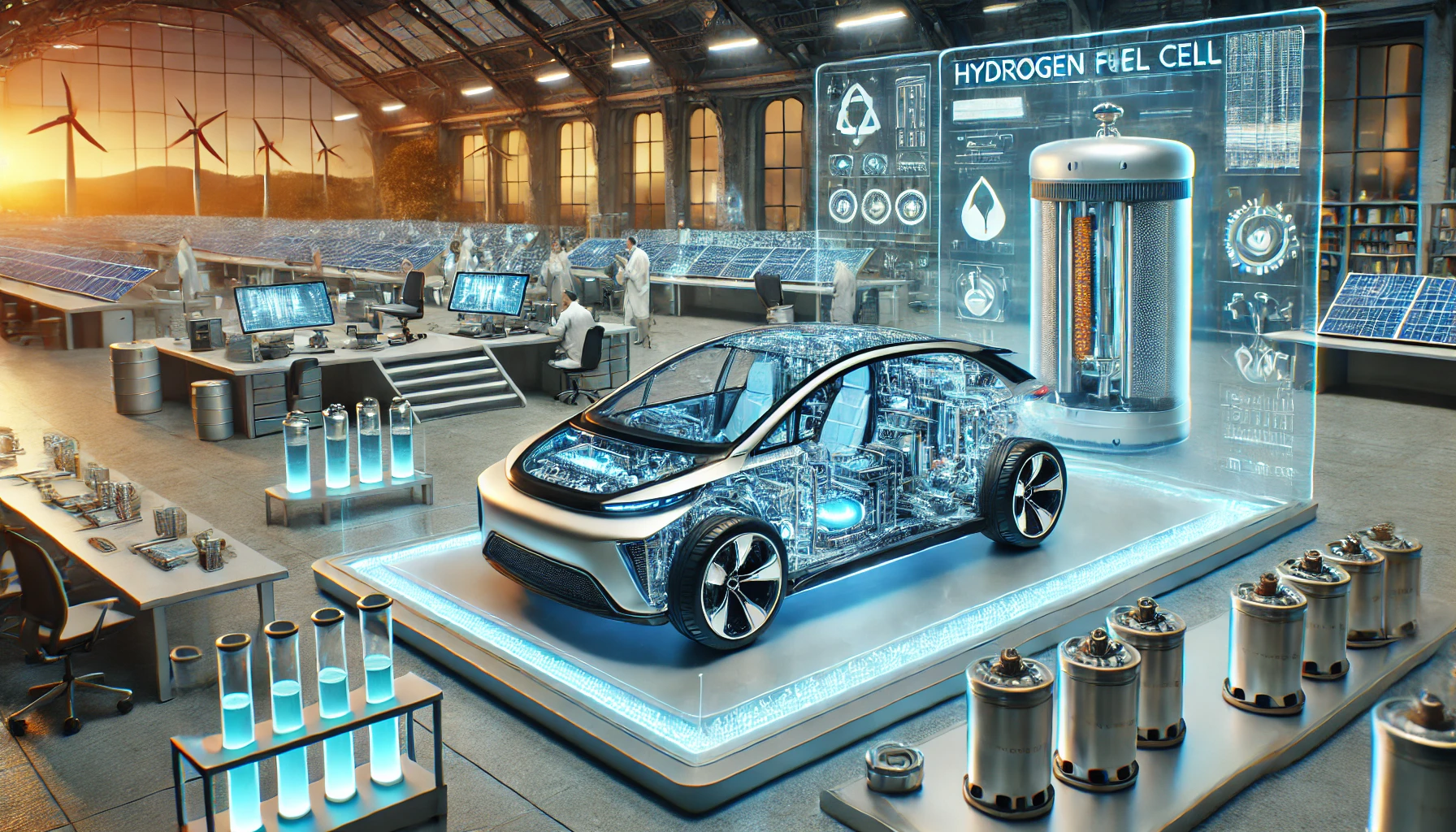
Another significant invention is hydrogen fuel cells. It uses electric vehicles powered by electricity derived from hydrogen, a green approach that gives out water as the only emission. Some benefits include:
- Fast Refueling: Refueling cars with hydrogen takes a few minutes, making it convenient for car users.
- Long Driving Range: They do not need to pause for a long time between the breakthroughs they make.
- Less Dependence on Batteries: This eliminates the need for large battery packs.
The Role of Renewable Materials in Car Manufacturing
Car manufacturers are also focusing on how a certain automobile is developed. If renewable material is used, it can save on many things, such as waste and pollution. Some examples of these materials are:
- Recycled Plastics: Old plastics are employed to manufacture new car parts directly.
- Natural Fibers: Interiors can also be created of softer materials like hemp or bamboo. Sustainable Metals:
- Purchasing metals and metals consuming products in a manner that is sustainable for the environment.
Cars that are friendly to the environment are not just fancy but the right direction that should be taken to have a favorable future for the earth.
All in all, the innovations in the cars are from electric vehicles, hydrogen fuel cells, and green materials, ensuring more sustainable cars. These advances are gradually enabling each of us to make better decisions regarding cutting on the environment.
Environmental Benefits of Sustainable Vehicles
Reduction of Carbon Emissions
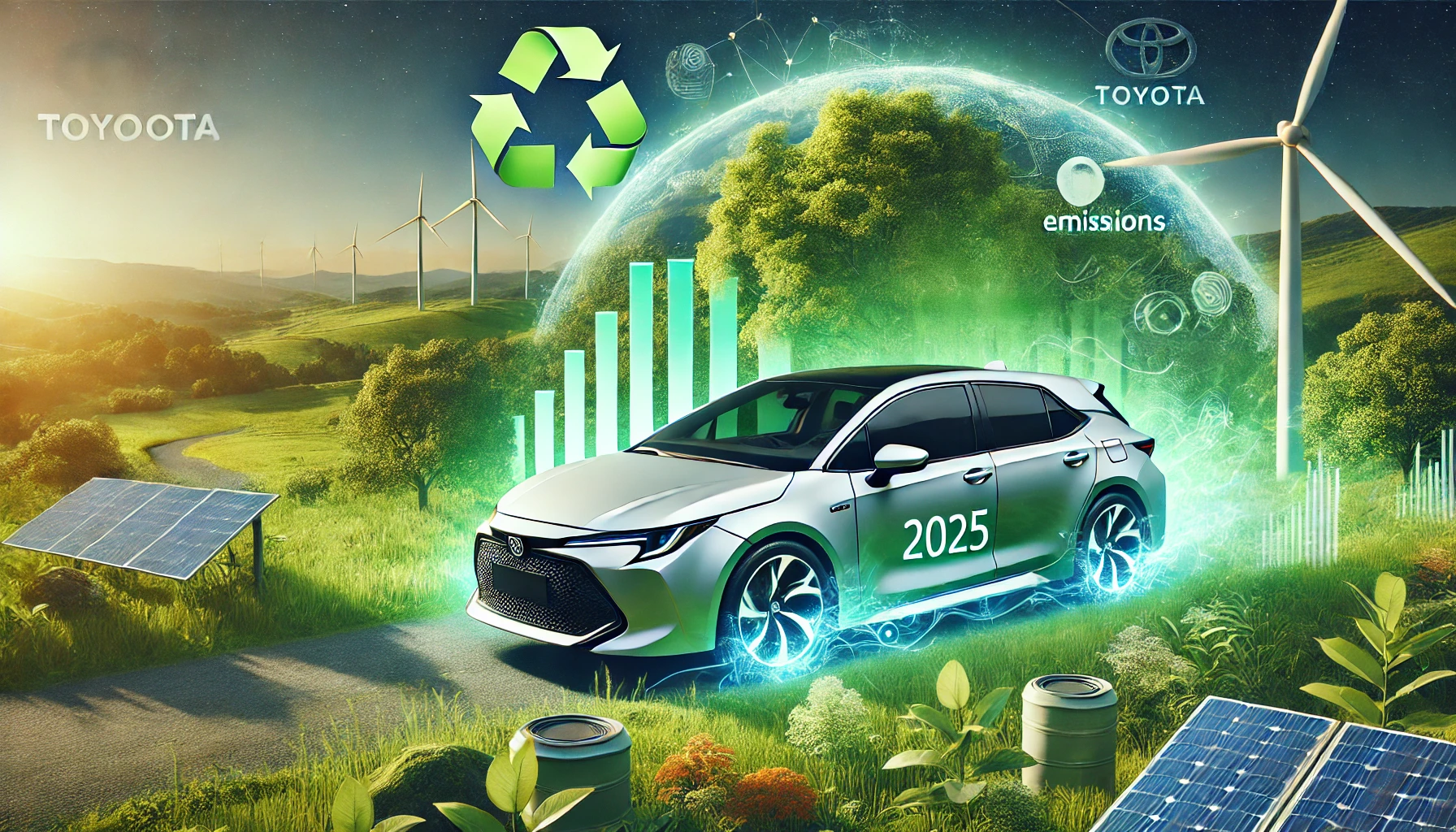
Electrical and other forms of sustainable automobiles are important to lessen the carbon emission rates. They also utilize clean energy resources to enhance the emission of deadly gases into the atmosphere. Here are some key points:
- Since electric cars produce no emissions from their tailpipes, they are considered environmentally friendly vehicles.
- Since hybrids are less fuel-consuming than traditional cars, they produce less emissions, too.
- The transition to sustainable vehicles will reduce greenhouse gas emissions substantially.
Impact on Urban Air Quality
The use of eco-friendly cars can significantly improve air quality in cities. Urban areas benefit from electric vehicles’ zero tailpipe emissions, producing cleaner air. Some benefits include:
- Reduced smog and air pollution.
- Healthier living conditions for residents.
- Lower rates of respiratory diseases are linked to poor air quality.
Conservation of Natural Resources
The other benefit of sustainable vehicles is that they assist in protecting the earth’s resources. By using renewable materials and energy, we can:
- Reduce dependency on fossil fuels.
- Encourage the practice of recycling and the adoption of reusable materials into products.
- Make sure that the coming generation can access energy resources in the right manner.
It is one thing to change to sustainable vehicles, and it is another thing to change our environment to accommodate sustainable cars.
Sustainable vehicles are more appropriate for the environment. They contribute to decreasing ground carbon emissions, enhancing air quality, and preserving our natural sources, which are all beneficial for a greener tomorrow.
Economic Implications of Green Technology Adoption
Cost-Benefit Analysis for Manufacturers
Therefore, adoptions of green technology imply specific fundamental shifts among car makers. Environment initiatives, in particular, also require more capital to fund than conventional approaches. But in the long haul, the advantages are only fairly large. Here are some key points:
- Lower operating costs due to energy efficiency.
- Potential for government subsidies and tax breaks.
- Increased customer loyalty and brand value.
Market Demand for Eco-Friendly Cars
Today, people are turning to eco-friendly cars quickly since they are now aware of the impact of pollution on the environment. Several key factors fuel this growing interest:
Climate Change Awareness
People are becoming more aware of the harm their regular cars do to the environment, hence the call for change.
Government Regulations
The various emission reduction policies and incentives will likely allow car manufacturers and buyers to adopt new clean technologies, such as electric/hybrid automobiles.
Sustainability Minded Younger Generation
Younger consumers are now taking sustainability as the highest priority; therefore, eco-friendly vehicles have a high tendency to be bought.
The changing market trends in consumption are leading to a shift in the automobile industry towards providing reasonable environmental solutions.
Government Incentives and Policies
All governments are encouraging the use of green technology, and it is especially concerning. They offer various incentives, such as:
- Tax incentives for buyers of electric vehicles.
- Subsidies for ecological modernization of manufacturers.
- Grant for the installation of charging stations and investments in infrastructure upgrades.
There is no doubt that moving to green transportation and technology is paramount. The following changes to implementing more progressive measures help the industry significantly decrease harm to the more delicate planet.
This article argues that manufacturers and customers stand to gain significantly in the long run despite consuming more capital in adopting green technology than following traditional processes. The market will shift, and those bound to switch will succeed in the future.
Challenges Facing the Green Technology Transition
Clean energy infrastructure development
The transition to green vehicles requires building the right infrastructure, which includes:
- Charging stations for electric vehicles should be other ways to create an enhanced charging means.
- Hydrogen Refueling Stations for fuel cell automobiles.
- Grid improvements specifically for Power Grid Upgrades in anticipation of increased energy requirements due to the increased use of electric vehicles.
Infrastructure creation for these facilities is critical in advancing and popularizing clean energy transport.
Consumer Awareness and Consumer Myths
Many consumers have doubts about eco-friendly cars, often based on common misconceptions, such as:
- High Costs: People still believe that electric or hybrid vehicles are very expensive to purchase.
- Limited Range: There are several fears that the battery will quickly discharge and the driving distance will be small.
- Reliability Issues: Concerning the general reliability and strength of eco-cars compared to regular cars.
These and many more myths need to be corrected to enhance the adoption of green technology in transport.
Technological and Financial Barriers
Switching to green technology sometimes means making cars and dealing with numerous financial and technological factors. Some of these barriers are:
- High research and development costs increase the risk of a company’s operations being less profitable than operating expenses.
- Availability of substandard renewable material.
- Some technologies require skillful and talented people to secure their development and management.
The Automotive Industry is on the brink of discovering newer opportunities along with several challenges that may hinder the shift to environment-friendly technologies. It is essential to advance and appreciate these barriers.
Case Studies of Successful Green Technology Integration
Leading Automakers in Sustainable Innovation
Most car manufacturing companies are making significant transformations to embrace the green industry. Both mentioned companies are excellent examples of this; Toyota was the first to introduce the Prius hybrid car. That is why other companies, such as Tesla, are mostly concerned with fully electric vehicles, and this market is already well-proven.
Collaborations Between Tech Companies and Car Manufacturers
Green technology must be implemented in the automotive industry; it needs the support of teams. Here are some significant partnerships:
- Ford and Google have moved into a partnership to tap into data analytics to improve car performance and the luster of America’s auto industry.
- At the moment, BMW and Samsung have partnered to work on a project to create batteries that are both efficient and long-lasting.
- Volkswagen is partnering with Quantum Scape to improve batteries and make out charging time.
Lessons Learned from Early Adopters
The early adopters of green technology have taught us valuable lessons:
- Fund research is important for the development of new technologies.
- Likewise, consumer education enables individuals to deal with the uncertainties of new technologies.
- It makes it evident that government support can enhance growth in green undertakings.
It is not about constructing cars but about developing green technology to make life habitable for the earth’s inhabitants.
| Automaker | Green Initiative | Year Launched |
| Toyota | Prius (Hybrid) | 1997 |
| Tesla | Model S (Electric) | 2012 |
| Nissan | Leaf (Electric) | 2010 |
This table shows some key players in the green automobile market and their initiatives. These efforts are paving the way for a cleaner environment.
The Future of the Automobile Industry with Clean Energy
Predicted Trends in Green Technology
The automobile industry will soon be changed in a new direction, and green technology will be the key. It is due to the development of innovation and improved awareness of environmental factors likely to define the future of electric vehicles. The following specific trends are worth checking on:
Electric Cars: A New Generation with Higher Output
The auto industry is swiftly increasing the production of electric vehicles to better respond to consumer demand, and many car companies have committed to stop making ICE cars in the next few years at the very latest.
The invention of new materials for battery construction
New technologies have eventually improved battery technology in terms of energy density, efficiency, and cost, thus making EVs more practical solutions for today’s day. Improvements such as solid-state batteries may bring even more breakthroughs.
Charging infrastructure developments
To this extent, the opportunities for developing the networks of upgraded and fresh EV charging points globally are important in catering to the increasing population of electric vehicle owners to afford them easy access to charging facilities to minimize their range anxiety.
These trends are a great example of how the industry is moving toward making transportation more environmentally friendly.
The Role of Autonomous Vehicles in Sustainability
Autonomous vehicles (AVs) are revolutionizing the transportation industry for comfort and advancement towards improved environmental prospects. Because these self-driving cars apply superior technology in driving efficiency, they come with the likelihood of presenting society with notable ecological gains.
Key Benefits:
Reduced Traffic Congestion
Such systems can negotiate the arrangements among themselves, making the traffic less congested and, hence, more traffic moves on the roads with minimum free time.
Lower Carbon Footprints AVs also imply smooth running with well-chosen pathways and correct driving habits that will lower fuel use, leading to less poisonous air quality and a healthier environment.
Enhanced Safety on the Roads
Overall, precisions in human errors lead to the mitigation of road mishaps, therefore minimizing traffic jams and responses to emergencies where the environment has been impacted heavily.
Therefore, when these vehicles are integrated with REs and green technologies, there is significant potential for AVs to support sustainability aspirations internationally.
Long-Term Environmental and Economic Impacts
Switching to clean energy in the automobile industry is anticipated to cause a revolution with many environmental and economic impacts.
Cleaner Air in Cities
Electric and hybrid vehicles decrease emissions that affect an individual’s health and overall living standards, especially those in urban areas.
New job opportunities in green technology fields
The transition to cleaner transportation is leading to the emergence of new industries like electric car manufacturing, battery building, and renewable energy industries that offer jobs to skilled staff.
Reduction in the Use of Fossil Energy
Sources Shifting away from gasoline automobiles reduces dependency on fixed carbon-based resources, serves the interest of energy security, and helps affect a greener change in the transport industry.
With the 2024 election on the horizon, clean energy and EVs remain policies focusing on America’s environmental and automotive security. It will impact the courses or directions to be followed to drive innovation, manufacturing, and sustainability in the future. Altogether, the automobile industry leads to a cleaner energy future, advancement, and job opportunities that benefit society.
Conclusion
Altogether, green technology has revolutionized the car industry in very important aspects. It assists in producing cars with higher emissions, using less fuel, and releasing fewer toxic gases. With increased concern over the environment, automakers are challenged to build electrified transport that is efficient and enjoyable. The direction toward cleaner technologies is not popular; it is quickly becoming the norm, a new way of approaching cars. If we fast forward to our present lifestyle, the developments of green technology are set to transform the automobile industry for the better in the long run.
Frequently Asked Questions
What is green technology in cars?
Green car technology means using better methods and materials for the environment. This includes electric cars, hybrid cars, and renewable energy vehicles.
—————————————————————————————————————————–
How do electric cars work?
Electric cars run on electricity instead of gasoline. They have batteries that store energy, which powers the motor to move the car.
—————————————————————————————————————————–
Are electric cars better for the environment?
Yes, electric cars produce less pollution than regular cars. They help reduce harmful gases that can damage the air and climate.
—————————————————————————————————————————–
What are the benefits of using hydrogen fuel cells?
Hydrogen fuel cells create energy by combining hydrogen and oxygen. They produce only water as a waste product, making them very clean and eco-friendly.
—————————————————————————————————————————–
Why are some people hesitant to buy eco-friendly cars?
Some people worry about the cost of eco-friendly cars or think they won’t work as well as regular vehicles. Others may not know enough about the benefits.
—————————————————————————————————————————–
What can governments do to help promote green cars?
Governments can offer tax breaks, build charging stations, and create rules encouraging people to buy and use eco-friendly vehicles.
—————————————————————————————————————————–
References:
- International Energy Agency. (2022). Global EV Outlook 2022: A Year of Transition. Retrieved from https://www.iea.org
- Renewable Energy and Energy Efficiency Partnership (REEEP). (2021). Advancing Renewable Energy Solutions in Transportation. Retrieved from https://www.reeep.org
- United Nations Environment Programme. (2021). Sustainable Transport and Environmental Initiatives. UNEP Reports. Retrieved from https://www.unep.org
- S. Department of Energy. (2022). Incentives for Electric Vehicles and Clean Transportation. Retrieved from https://www.energy.gov
- Tesla, Inc. (2012). Model S: A Commitment to Sustainable Innovation. Retrieved from https://www.tesla.com
- Volkswagen Group. (2021). Collaborating with QuantumScape for Solid-State Battery Breakthroughs. Retrieved from https://www.volkswagen.com
- Ford Motor Company & Google. (2021). Strategic Partnership to Enhance Automotive Performance and Sustainability. Retrieved from https://www.ford.com
- BMW Group. (2021). Sustainable Battery Technology Development with Samsung. Retrieved from https://www.bmw.com
- Peer-reviewed research Journals in Environmental Science and Automotive Engineering. (2020-2022). Studies on Battery Efficiency, Energy Storage, and Eco-Friendly Materials. Environmental Science & Engineering Journal.
For comprehensive insights and in-depth information, explore our curated collection of articles Click Below:
A Comprehensive Guide to Honda Accord: A Timeless Choice for 2024 Car Buyers
Case Studies of Cities Heavily Impacted by Smog from Vehicle Emissions
Enhancing Air Quality and Comfort The Function of Climate Control Systems in Automobiles
Global Data – EV Tracking System & Emission Monitoring
Global Road Safety & Vehicle Standards_ A Complete Guide
Riding High – The Top 5 Vehicles Dominating 2024
Toyota Corolla 2024 Review – Everything You Need to Know About Features, Price, and Performance
The 15 Leading Startups Revolutionizing Autonomous Vehicles in 2024
The Evolution and Appeal of Sports Cars_ A Comprehensive Analysis
The Impact of Green Technology on the Automobile Industry
The Science Behind Car Safety Features_ How They Work
From Seatbelts to Sensors_ The Journey of Car Safety Innovations
How to Buy a Used Car_ A Step-by-Step Guide
We are a Trusted Name in Automotive Industry & Technologies!
Our Trusted Partners
We are proud to collaborate with industry leaders to deliver exceptional value and quality to our customers:
- Auto World Japan: A trusted name in exporting high-quality Japanese vehicles worldwide.
- BE FORWARD: A global leader in selling and exporting used cars with an excellent reputation.
These partnerships allow us to bring you reliable, top-tier services and products directly.

